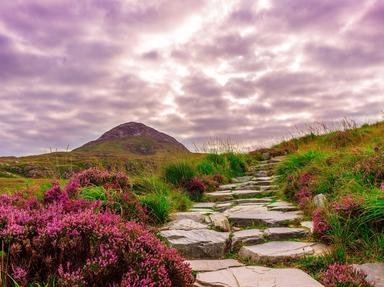Quiz Answer Key and Fun Facts
1. In terms of size, where does Ireland rank among the islands of Europe?
2. Writing under pen names such as Flann O'Brien and Myles na gCopaleen, Brian O'Nolan is now regarded as one of Ireland's greatest writers of the 20th Century, but what career did he originally follow to support his family?
3. Many people in Ireland will have seen paintings and depictions of William Prince of Orange (also known as King William III) riding a horse at the Battle of The Boyne (July 1690). Given this iconic image, what might be construed as ironic about the way he met his death some 12 years later?
4. Daniel O'Connell was one of Ireland's greatest political leaders of the 19th century. He campaigned for Catholic Emancipation and repeal of the Union between Ireland and Great Britain. On which pre-Euro banknote did his image appear?
5. Which of these US presidents did NOT claim Irish ancestry:
6. Where would you find the headquarters of the Irish Greyhound Racing Board? (Bord na g'Con)
7. According to legend, the Giant's Causeway was built by Finn McCool to walk across the sea to Scotland. Why did he want go there?
8. Where would you find Northern Ireland's only working gold mine?
9. This Irish dramatist and writer of short stories was born in Co Tyrone in 1929 and is best known for works such as 'Philadelphia, Here I Come!', 'Translations' and 'Dancing at Lughnasa'. Can you name him?
10. Although he hailed from the US state of Minnesota, how did Milburn Henke earn a particular association with Ireland?
Source: Author
darksplash
This quiz was reviewed by FunTrivia editor
Nannanut before going online.
Any errors found in FunTrivia content are routinely corrected through our feedback system.


